Contact UsCONTACT
Please feel free to contact us if you have any questions or concerns.
Inquiry FormStories
STORIES
SERIES EMBARK
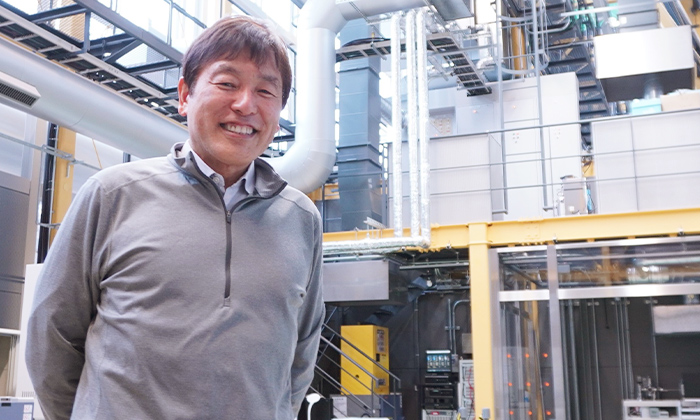
We can lead a convenient life by enjoying electric energy on a daily basis. Electricity, which is indispensable for our daily lives, is dispatched only as much as is deemed necessary based on demand forecasts, with the margin of error adjusted according to the amount of electricity generated; simply put, there was no "storage" function. In addition, with global warming becoming an urgent issue in recent years, the use of renewable energies such as solar and wind power is becoming increasingly important, but since these natural energies fluctuate capriciously depending on the "weather," more elastic and greater adjusting power is needed.
However, the sustainability of modern civilization would be greatly enhanced if such renewable energy could be dispersed, stored, and dynamically interchanged within a region. And the stockpiling of electrical energy will also play an important role in the event of large-scale power outages due to natural disasters.
The company develops next-generation energy storage technologies and solutions with the ultimate goal of creating a clean and resilient society by optimizing energy systems through the local production and consumption of such energy. We interviewed Hisashi Tsukamoto, the company's CEO and a doctor of science.
(Interviewer: Mae Kori)
In 1979, I graduated from the Department of Chemical Engineering, Faculty of Engineering, Kyoto University, and joined Nippon Battery Co. At Nippon Battery, I developed and successfully manufactured the world's first rectangular Ni-Cd battery in the field of small batteries, and this battery was used in Motorola cellular phones and Sony's Walkman. At the time, Sony was working on the development of a cassette-sized Walkman, but there was no battery that matched the form of the Walkman. The person in charge of development visited various battery manufacturers and finally came to Nippon Batteries. The story sounded very interesting, so I agreed to do it after asking my boss for his opinion.
Although many things happened after that, we worked on the development and commercialization of lithium-ion batteries, which were the most advanced at the time, and achieved great business success.
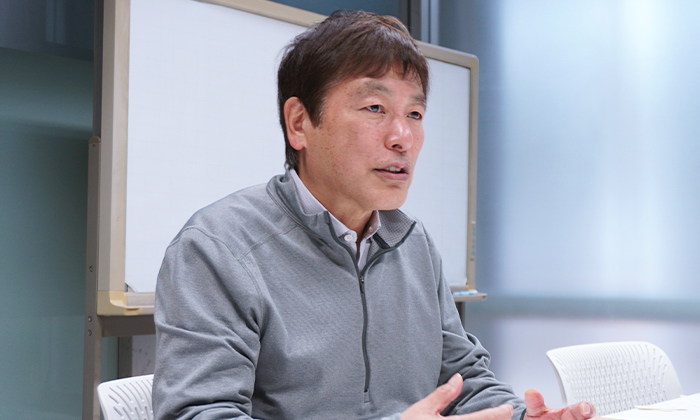
Since Japan was by far the leader in the field of lithium-ion batteries, various projects were brought to us and we had opportunities to meet with various people. One such project was a request from a medical device manufacturer in the U.S. to make an implantable battery for pacemakers, but unfortunately, we could not accept the request at that time under the circumstances. That has stayed with me ever since.... I thought that even though it would be difficult for Nippon Batteries as a business, there must be something we could do after all, and that we could make batteries useful to society in more ways. One day, I decided to go to the U.S. to meet with the owner of a medical device manufacturer who had approached me. As a result, I hit it off with him, and with his investment, I established a battery development company in L.A. called Quallion LLC.
Quallion has launched an implantable battery for pacemakers, developed specialty small batteries for the medical, space, and other fields, and has grown to a company with about 140 employees.
Certainly, Quallion's business was doing well. However, once the company began to run well as an organization, I wanted to try something new, and I was personally developing various ideas. I think this idea is the starting point of the present CONNEXX SYSTEMS.
It was then that the Great East Japan Earthquake hit Japan. I couldn't stand by and watch the horrific damage in my home country being reported day after day.... I decided that if I was going to start a new business, I would do it back in Japan. In fact, I had first-hand experience at Quallion of the importance of starting a business. The place where I founded my company was in an area of Los Angeles with high poverty and high crime rates. However, as Quallion and other startups started up and grew to a reasonable size, the crime rate around us visibly decreased. I thought that the main reason people commit crimes is because they are on the edge, because they don't have jobs and their families don't have anything to eat, or they can't go to the hospital when they get sick, and that very few people would bother to commit a crime if they had a job. Of course, that is not the only motive for committing crimes, and it may have been in a limited area, but that realization came to me when I saw the people who came to Quallion, which does not pay well, day in and day out, and went home tired in the evening. I also strongly felt the importance of "creating jobs and increasing employment. At the time, Japan was already suffering from a long recession, and then came the earthquake and the nuclear power plant accident. I was afraid that jobs would disappear and the country would collapse. I wanted to take this opportunity to return to Japan and contribute to the creation of jobs in our country, however small.
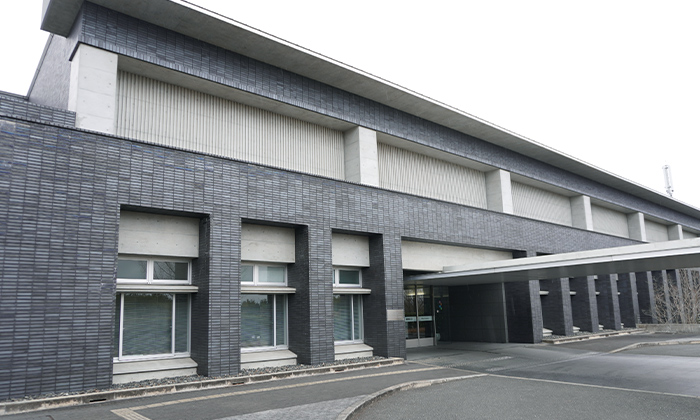
Immediately after deciding to return to Japan, I registered the establishment of CONNEXX SYSTEMS, Inc. as the head office at my home address in Osaka. After about a year of preparation, I secured an office in Kyoto, returned to Japan, and started my business in earnest. I chose Kyoto as the place to start the company because there are many excellent companies in the battery-related field in the Keiji area, and my alma mater, Kyoto University, is also located there, so I thought I could connect and cooperate with many companies and excellent researchers.
The Great East Japan Earthquake made us keenly aware of the need to strengthen our energy infrastructure, and the increasing urgency to build smart grids with renewable energy at their core in the future, so we at CONNEXX SYSTEMS decided to develop new energy storage technologies and solutions, especially for infrastructure. We decided to develop new energy storage technologies and energy storage solutions, especially for infrastructures. This is the BIND Battery®HYPER Battery™The SHUTTLE Battery is the most important technology in the SHUTTLE Battery lineup, and the SHUTTLE Battery is the most important technology in the SHUTTLE Battery lineup.™It is.
BIND Battery®is a hybrid battery technology that combines different types of batteries to realize functions and applications that cannot be handled by one type. The combination of lead-acid batteries and lithium-ion batteries features high safety and excellent low-temperature characteristics. It is a "nice-to-have" battery that combines the overcharge absorption response and excellent low-temperature performance of lead-acid batteries with the superior reliability of lithium-ion batteries.
Next, HYPER Battery™However, this battery is characterized by its unparalleled energy delivery/recharge performance, making it suitable for applications that require a short time to complete charging and burst output, and is currently targeted primarily at robots. It has already been implemented in AGVs (Automated Guided Vehicles), which feature 90-second charging. In the future, we expect to put it to practical use in choc-choc recharging vehicles and vertical take-off electric airplanes.
And SHUTTLE Battery, which has been focused on basic development™is a completely new innovative battery that uses air and iron to achieve an energy density many times greater than that of lithium-ion batteries. Since the main materials are iron and air, it has a low environmental impact and can be obtained inexpensively anywhere in the world. It is also very simple to construct, so anyone will be able to make it anywhere. It is extremely safe because it is basically composed of nonflammable materials. Natural Energy and SHUTTLE Battery™We believe that a fair and conflict-free energy society can be realized by
To use an analogy to the world of telecommunications, BIND Battery®The energy storage system using the HYPER Battery technology is a server of energy with a reasonable capacity and speed of delivery/receipt.™is a flash drive that allows fast energy transfer anyway, SHUTTLE Battery™should be viewed as a data center that can accumulate a very large amount of energy (although it is not good at quick movements at the moment). We believe that by linking three energy storage devices with three different functions and roles and coordinating them with each other, we can configure a high-density and flexible energy storage network that can maximize the use of renewable energy generation. In other words, "PowerNET," not the Internet.™We believe that PowerNET can achieve this.™SHUTTLE Battery™The original motivation for the project, the realization of a disaster-resistant and equitable energy society, or PowerNET, was achieved after the technological development of the™We would like to realize the following
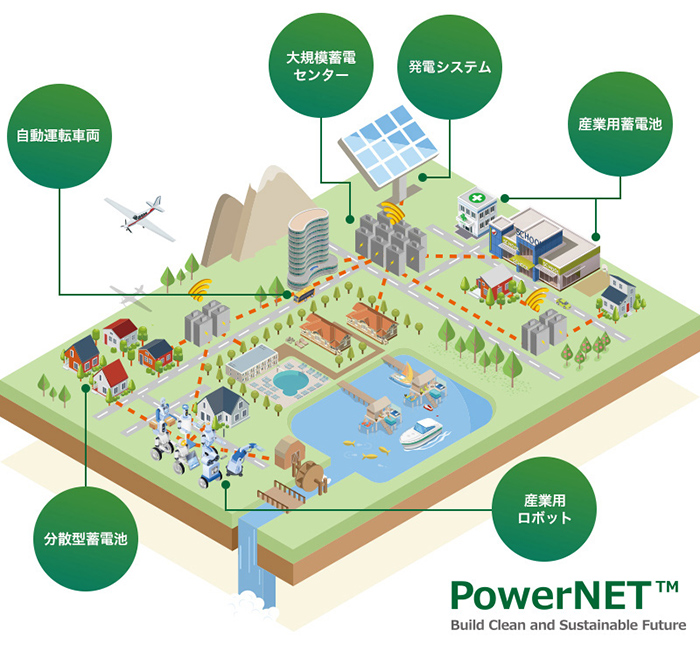
PowerNET™We are not the only company that can realize an electric power infrastructure such as the one in the "Power Infrastructure" section. We will develop the energy storage devices that will be used there. The most important point is that PowerNET™The first step is to understand the exact specifications required for energy storage devices in the new power networks similar to those of the past. I think it is important to interact with university research groups, companies dealing with energy networks and information, and government agencies that can play catch-up on these specifications.
I feel that walls can always be overcome. No matter what kind of work or industry you work in, you will always encounter problems and walls. I have experienced that many times, even when I have worked hard to come up with a solution, a new problem has appeared soon after. It's no more! I have been able to overcome all of these problems by suddenly coming up with a remedy, by having one of my colleagues move to help me, or by getting hints from my competitors. If you start a business and have a tough time, never give up. I want to tell you that you will get where you need to go. But I also think that you have to be "creative" in order to continue to develop and start a business with this kind of persistence. When I feel that I am engaged in creative activities, I do not feel basic fatigue or worries. In Japan, there has always been the existence of "Takumi" (artisans). Whether it is research and development or starting a business, I believe that the same attitude of thorough mastery and gazing at things as in traditional craftsmanship can be considered a creative activity. I believe that the Japanese have a DNA that always finds a creative aspect even when repeating the same thing over and over again. I hope that this will be our greatest strength and the driving force for the future.
And it is also very important to build relationships with reliable venture capitalists such as Kyoto University Innovation Capital. Our company must increasingly ask for their advice and support.
(Interviewed in February 2022. Affiliations, positions, etc. are as of the time of the interview)
Batteries are unique in many ways. A battery that can store a lot of energy, a battery that has high instantaneous power, a battery that produces stable power whether it is hot or cold, and so on. Just as a group of people with diverse personalities creates a strong society (diversity), a resilient society may exist by combining batteries with various personalities and connecting them to each other. CONNEXX SYSTEMS is a scientific and philosophical battery manufacturer.
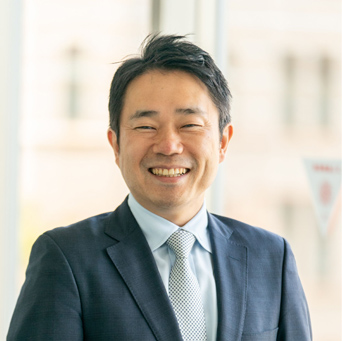
Nobuhiro Yagi

CONNEXX SYSTEMS Co., Ltd. Website
Please feel free to contact us if you have any questions or concerns.
Inquiry Form